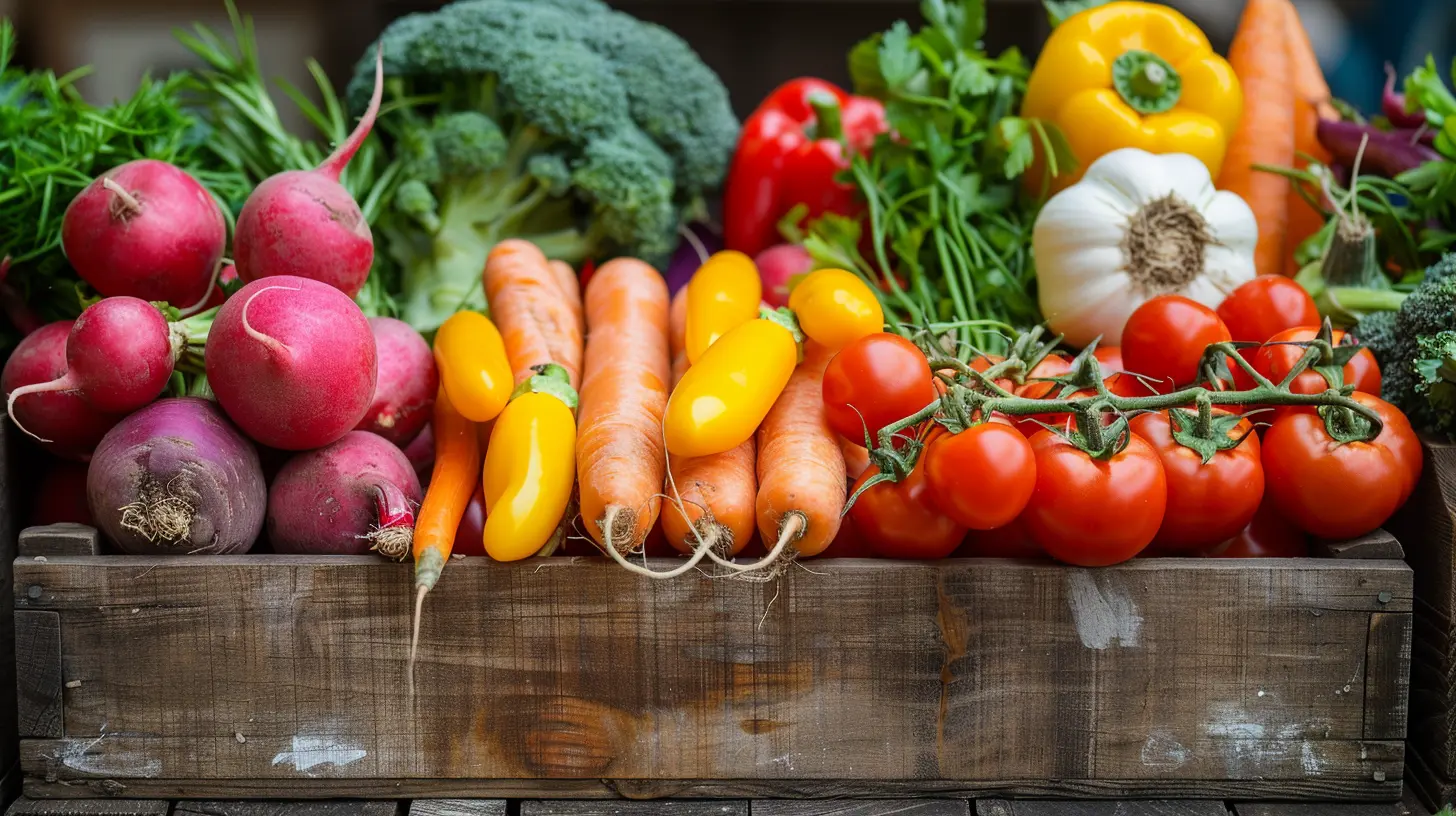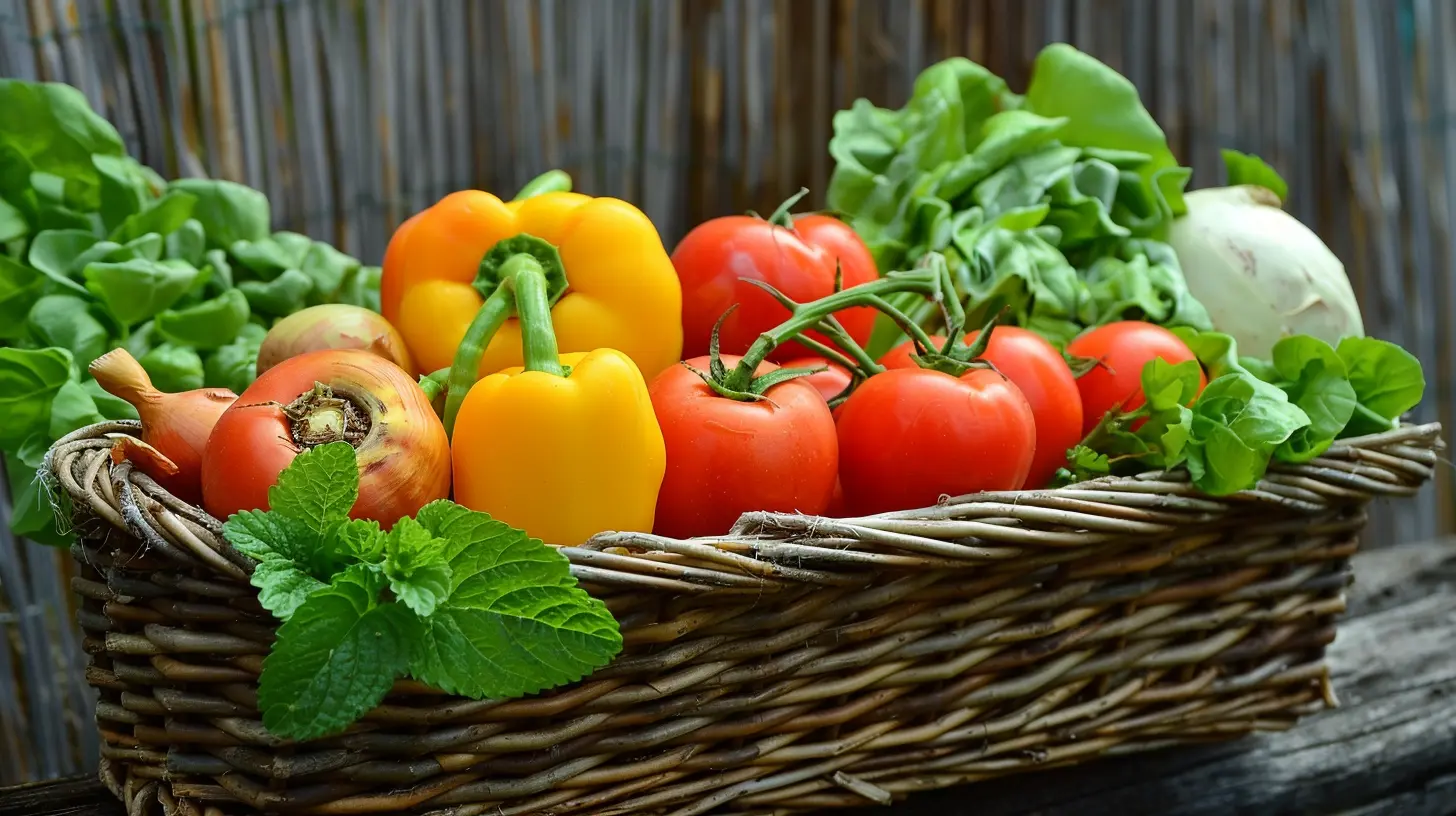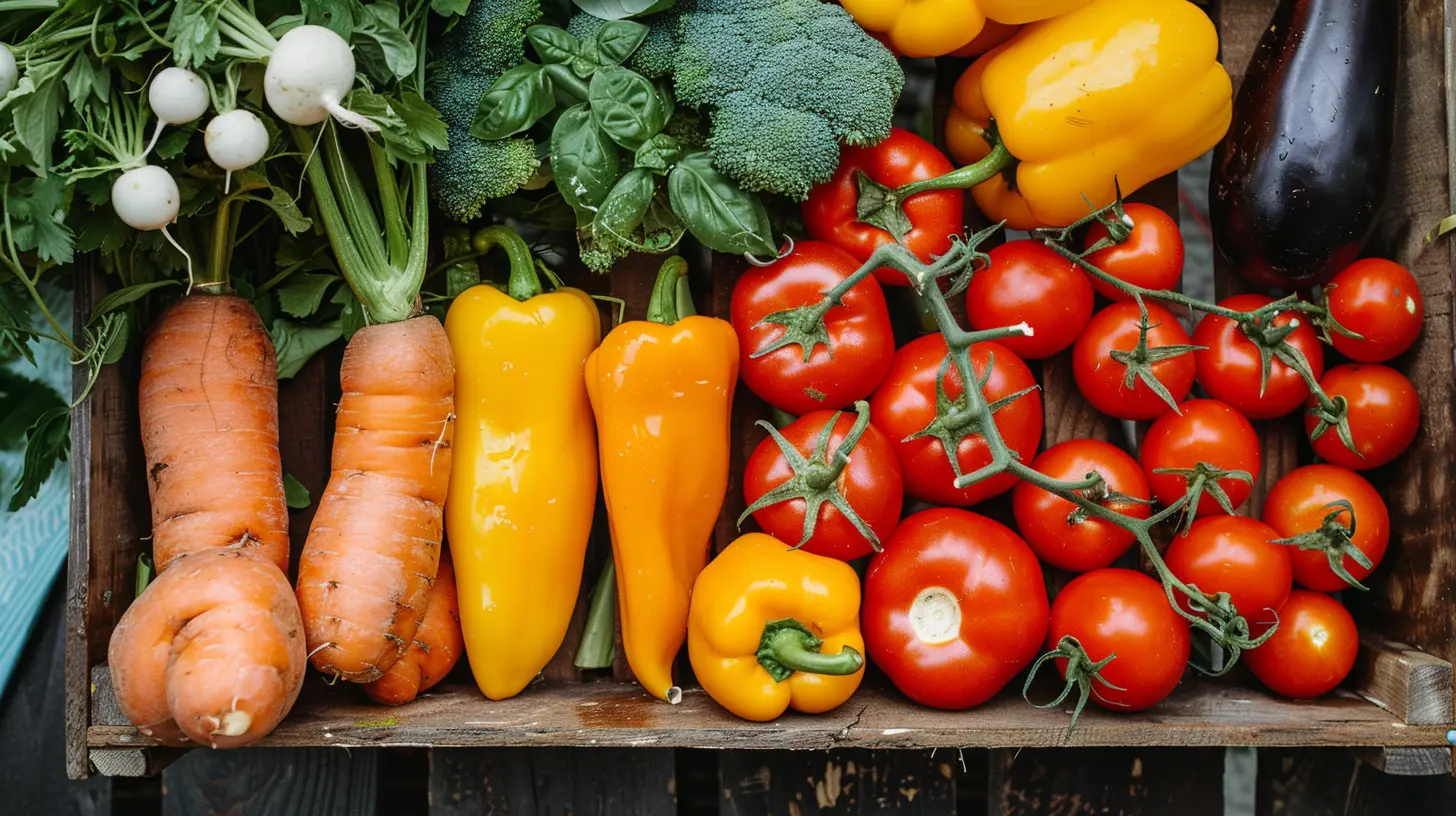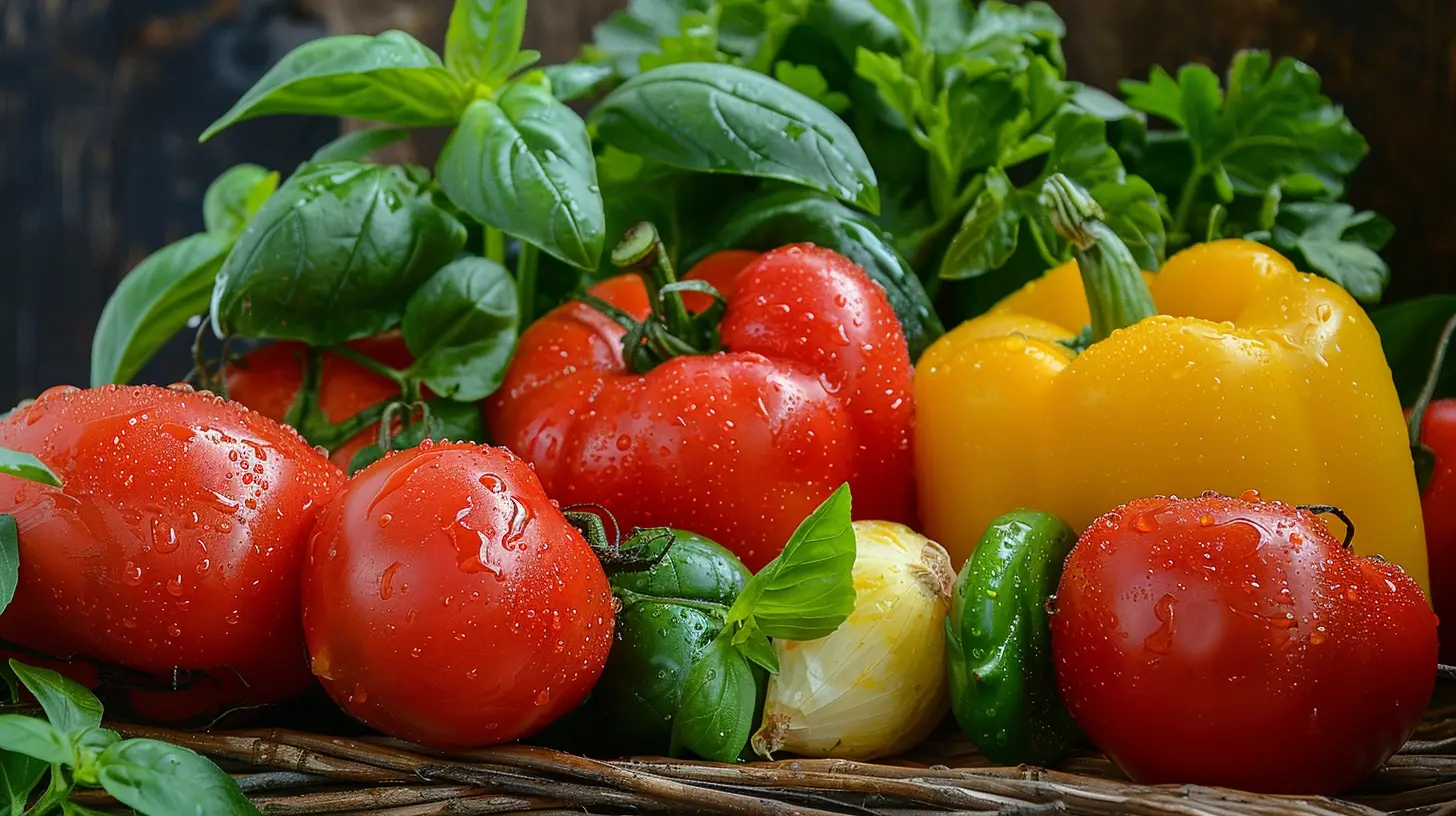Exploring Seasonal Vegetables for Healthier Meals
3 October 2025
Introduction
Ever wondered why your grandmother always insisted on eating fresh, seasonal veggies? Well, she was onto something! Seasonal vegetables aren't just tastier; they’re also packed with more nutrients and come with added health benefits. Plus, they’re often cheaper and more sustainable.
With grocery stores offering nearly every vegetable year-round, it's easy to forget that certain veggies thrive in specific seasons. But eating with the seasons can do wonders for your health! Let’s dive into the world of seasonal veggies and see how they can transform your meals.

Why Eat Seasonal Vegetables?
1. More Nutrients, Better Health
Vegetables harvested in their natural season are fresher and richer in vitamins, minerals, and antioxidants. Since they don’t require long storage times, they retain more of their nutritional value. For example, summer tomatoes are bursting with vitamin C, while winter carrots are loaded with beta-carotene.2. Better Taste and Quality
Have you ever bitten into a tomato in December and wondered why it tastes like cardboard? That’s because it was likely grown in artificial conditions or transported from miles away. Seasonal veggies are harvested at their peak, meaning they have better texture, flavor, and aroma.3. Budget-Friendly
Buying out-of-season produce usually means paying more since they have to be imported or grown in controlled environments. Seasonal vegetables are often locally sourced, making them more affordable. Your wallet will thank you!4. Supports Local Farmers & Sustainability
Choosing seasonal produce reduces the need for long-distance transportation, cutting down on fuel consumption and carbon emissions. Plus, buying from local markets supports farmers in your area. It’s a win-win!
Seasonal Vegetables for Every Time of Year
Now that we know why seasonal eating is so great, let’s break it down by season.Spring Vegetables (March – May)
Spring is all about freshness and renewal. It’s the season when greens start popping up, bringing a light and refreshing touch to your meals.1. Asparagus
Rich in fiber, folate, and vitamins A, C, and K, asparagus is great for digestion and heart health. Toss it on the grill or add it to salads for a delicious crunch.2. Peas
Peas are tiny nutritional powerhouses full of protein and fiber. Add them to stir-fries, soups, or simply steam them with a bit of butter.3. Spinach
Packed with iron, magnesium, and vitamins A and C, spinach is excellent for boosting immunity. Blend it into smoothies, throw it into salads, or sauté it with garlic for a tasty side dish.4. Radishes
Loaded with antioxidants and vitamin C, radishes are great for digestion and detoxification. Slice them into salads or roast them for a different take.Summer Vegetables (June – August)
Summer is the season of abundance, with juicy and colorful veggies perfect for fresh salads, grilling, and light meals.1. Tomatoes
Tomatoes are rich in lycopene, an antioxidant linked to heart health and skin protection. Whether in salads, sauces, or sandwiches, they bring a burst of flavor.2. Zucchini
Low in calories but high in fiber and vitamin C, zucchini is a super versatile veggie. Spiralize it for a low-carb pasta alternative or grill it for a smoky taste.3. Bell Peppers
Loaded with vitamin C, bell peppers boost immunity and support eye health. Eat them raw with hummus or add them to stir-fries or fajitas.4. Cucumbers
Hydrating and refreshing, cucumbers are excellent for skin health and digestion. Toss them into salads or blend them into a cooling summer drink.Autumn Vegetables (September – November)
As the weather cools down, heartier vegetables take center stage, perfect for warm and comforting meals.1. Pumpkins
Not just for Halloween! Pumpkins are packed with beta-carotene, essential for eye health and immunity. Roast them, puree them into soups, or bake them into muffins.2. Sweet Potatoes
These naturally sweet veggies are a fantastic source of fiber, vitamin A, and potassium. Try them roasted, mashed, or turned into fries.3. Brussels Sprouts
Brussels sprouts are rich in antioxidants and fiber, supporting digestion and reducing inflammation. Roast them with a drizzle of olive oil and balsamic glaze for a delicious side.4. Cauliflower
A low-carb alternative to rice or potatoes, cauliflower is packed with fiber, vitamin C, and antioxidants. Mash it, roast it, or transform it into a pizza crust!Winter Vegetables (December – February)
Winter calls for nutrient-dense veggies that can handle the cold and keep you full and nourished.1. Kale
A true superfood, kale is loaded with iron, calcium, and vitamins A and C. Add it to soups, smoothies, or sauté it for a nutrient boost.2. Carrots
Carrots are a fantastic source of beta-carotene, which supports vision and skin health. Roast them for a caramelized sweetness or add them to hearty stews.3. Cabbage
Filled with fiber and vitamin K, cabbage is great for digestion and gut health. Enjoy it in coleslaw, stir-fries, or fermented as sauerkraut.4. Beets
Beets are rich in iron and folate, making them excellent for blood circulation and heart health. Roast them, juice them, or toss them into salads for a vibrant color and earthy taste.
Tips for Incorporating Seasonal Vegetables into Your Meals
Eating seasonal vegetables is easy when you have a few tricks up your sleeve. Here are some simple ways to include them in your diet:1. Visit Local Farmers' Markets
Farmers' markets are the best places to find fresh, in-season produce. Plus, you get to support local growers while enjoying the freshest picks of the season.2. Plan Your Meals Around Seasonal Produce
Before grocery shopping, check out what’s in season and plan your weekly meals accordingly. This keeps your diet varied and nutrient-rich.3. Preserve Seasonal Veggies
Not ready to say goodbye to your favorite vegetable when the season ends? Freeze, pickle, or dehydrate them to enjoy later. Frozen spinach in a smoothie? Yes, please!4. Experiment with Cooking Methods
If you’re tired of the same steamed veggies, switch things up! Roasting, grilling, and stir-frying can bring out new depths of flavor.5. Blend Them into Smoothies and Soups
Not a fan of eating greens? Hide them in smoothies or blend them into soups. A handful of spinach in your morning smoothie is virtually undetectable but super nutritious!
Final Thoughts
Eating seasonal vegetables isn’t just a trend—it’s a smart and delicious way to boost your health while supporting the environment and your local farmers. From the crisp freshness of spring greens to the hearty warmth of winter root veggies, each season brings its own nutritional treasures.So next time you're grocery shopping, take a moment to think about what’s in season. Your taste buds, body, and planet will all thank you!
all images in this post were generated using AI tools
Category:
Healthy CookingAuthor:

Madeline Howard
Discussion
rate this article
1 comments
Archer McNaughton
Who knew brussels sprouts had a secret life as tiny superheroes? Let's celebrate these veggie wonders and their seasonal sidekicks—because every meal deserves a quirky twist and a touch of green magic!
October 4, 2025 at 4:59 AM

Madeline Howard
Absolutely! Embracing the superhero qualities of Brussels sprouts and other seasonal veggies can make our meals both healthier and more fun. Cheers to adding that touch of green magic!


